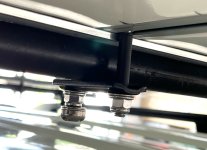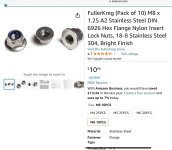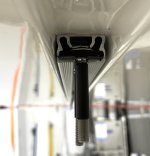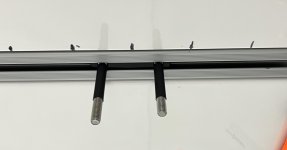John E Davies
Adventurer

FYI I am using two old school round Yakima crossbars with Yakima Rail Grab LowRider towers. I fabricated two strips to act as spacers using 3/16” x 2” wide 6061T3 aluminum, this allows the fiberglass to clear the steel Yakima brackets!!! Without spacers the fiberglass would be badly damaged at those four locations..
I was very, VERY disappointed in the supplied hardware and the fact that the undersized u-bolts were too short.

The Autohome Anti-Theft kit is a farce and I canNOT believe that they expect you to replace two steel nuts with two aluminum ones. They do not even have steel inserts !!! That is insane, and the price is obscene! I returned the one I bought.



Order two sets of two security nuts, they are cheap and are polished stainless, add one lock to each inner bolt (the longest one) so that a thief has a harder time accessing them. These should be used in ADDITION TO the nylocks, not instead of. They are not strong enough nor do they have any kind of locking ability. They are a deterrent at best.

Drill out the plates to slightly over 5/16” and square the holes in the flat ones with a small flat file to accept 8 mm carriage bolts. The bolts fit ***perfectly*** into the RTT tracks with no rubbing.
Trim the bolts to the correct length for your bars. Add self adhesive thick-walled heat shrink tubing to cover and seal the exposed threads, to retain the bolts, and for better appearance. They blend in nicely with the black crossbars.
Repaint the parts and let them dry for a couple of days.
Add reference marks near the tracks with a Sharpie at 2” increments to help preposition the four bracket assemblies (measure your crossbar spread and match that.) This saves a lot of time and aggravation. Use stainless 5/16” flat washers between the nut and plates to preserve the newly painted finish.




John Davies
Spokane WA
2013 Toyota Land Cruiser200
2023 Maggiolina Grand Tour 360 Carbon Medium
Last edited:








